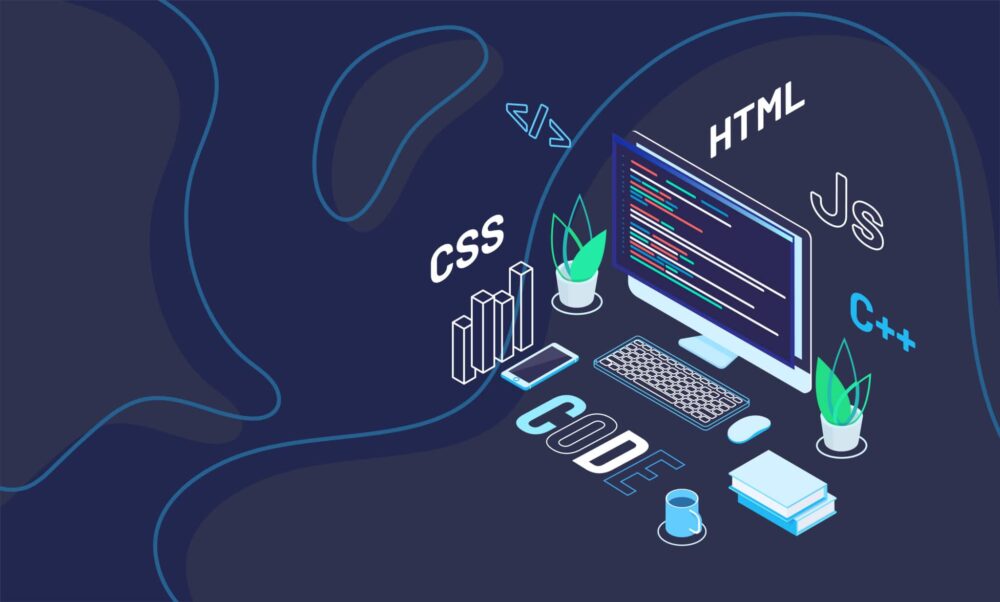How To Become a Designer Who Codes
The topic of whether or not designers should learn to code is probably the most debated one in the industry. There are numerous forum threads and blog posts supporting both sides. Additionally, the steps to actually learning how to code are not always so clear. In this featured post we will run through some important steps to becoming a designer who codes along with the many benefits of combining your design skills with coding knowledge.
Introduction
Some say that a professional should have one focus only and not spread themselves too thin. Their main argument is – a jack of all trades can’t have a deep understanding of every field they operate in, so they can’t be a true professional.
Others believe that in the modern world, a multi-skilled professional is a huge benefit for business and there shouldn’t be any obstacles for a designer to get as many valuable skills as they deem necessary. After all, knowledge is power.
Should designers learn to code?
In this neverending debate on whether a designer should be able to code, we are definitely on the “yes” side. In this post, we will share our arguments on why being a designer who codes is great for everyone involved and give you a few tips on how to become one.
What kind of designers would benefit from learning programming languages or coding?
If you are a web designer, UX designer, game designer, or app designer, then you will definitely expand your ability to design and open additional opportunities in your current vocation.
How to become a designer who codes
Learning to code might seem like an impossible thing to do. The code looks gibberish, and the task of learning to understand it seems boring and tedious. Yes, it won’t be a walk in the park. But it won’t be as difficult as you imagine. With enough motivation, you can master the basics of any programming language you choose in mere weeks.
6 Tips On How to Learn Coding For Designers:
1. Choose the language your developer uses for your current project
There’s no sense in learning a programming language if you can’t apply it in your daily routine. Besides, when you have a professional developer sitting next to you can ask questions and get useful tips.
2. Study every day from reputable sources
Just like your design education, learning to code will take a little sacrifice and effort. But then again, all good things usually do, right?
You don’t have to spend 8 hours on it every day. But investing 30 minutes into your coding studies each day will do wonders for your skill level. Consistency is the key.
Additionally, you don’t have to spend a ton of money. We understand that sometimes the budget for learning extra design skills can be non-existent, especially if you’re between projects. Having affordable and free options is what we will touch on, but that will be in the section below entitled – What programming languages can I benefit from?
3. Practice more
Coding is a practical skill. Learning the theory without applying it won’t do anything for you. So make sure to practice. Select courses that offer an 80 to 20 practice-theory ratio and don’t skip the exercises.
4. Study and analyze the professionally written code
“Hacking” someone else’s code is a brilliant learning technique. You can reverse engineer the project you are designing for, test each line, and get a clear picture of how it works. The best thing here is – you can ask the developer who works on it to explain the things you can’t grasp on your own.
5. Follow the communities
The greatest thing about the coding industry is the community each programming language has around it. There are numerous forums, Reddit threads, video blogs, and websites where you can find like-minded people to share knowledge and ask questions.
The communities are where you find the best tips, code snippets, new techniques, and other immensely useful info. Besides, if you are stuck, you can always ask for help. Here are the most popular websites where you can find coding communities:
6. Reward yourself
As we’ve already established – learning to code is not a walk in the park, especially when you are a designer with a full-time job or a freelancer overwhelmed with projects. There will be times when you get frustrated and lose motivation. That’s inevitable. Rewarding yourself for successfully completing milestones will make the learning process much more enjoyable. And it is guaranteed to keep up the motivation!
Why learning to code is a good idea for designers
The design industry is ever-evolving and competitive. In this environment, a professional has to maintain their edge, become more agile, strive to progress, and seek to innovate. The alternative is stagnation.

Top 4 Reasons Designers Should Consider Learning How to Code:
1. Learning to code will enrich your designs
As a professional designer, you know that the best solutions are found when you think outside the box. To be able to do that, you need to learn new things, get new experiences, and broaden your horizons.
Imagine if you could view things from a different perspective. Through the eyes of a developer, for example. Learning to think like a frontend developer will allow you to discover fresh solutions to old problems and consider your designs more objectively.
2. You will become a better collaborator
Understanding the scope of work and specifications is not everything the designer role requires. Well, at least not for the truly good designers. The truly good designers are always great empaths. They empathize with the end-users and create better designs. They empathize with their colleagues and collaborate better. This empathy allows them to create better products and move forward in their careers.
With the key developer skills under your belt, you will be able to speak with the developers in their language. This will allow you to easily overcome the common discrepancy between what the designer imagined and what the developer can actually deliver.
Even if you don’t code on a daily basis, understanding the technical possibilities, you can design knowing exactly how your vision will be implemented. You can work faster and collaborate better.
3. You will be able to streamline and automate processes
The modern world of technology and innovation is very fast-paced. If you work slowly and do everything by hand, you are doing it wrong.
With the coding skills in your arsenal, you can write your own scripts to automate the most tedious and repetitive tasks.
4. You will have a competitive advantage in the job market
Having a unique and desired skillset in your industry will help you to stand out among the crowd and give you a competitive edge which ultimately provides more opportunities.
Design and development are becoming more and more intertwined each year. Adding coding to your CV will allow you to meet this market demand and get an advantage over those designers who can boast only the industry-specific skills and tools like Photoshop, Sketch, and Figma. Besides, multi-skilled designers stand out as versatile team players.
What programming languages can I benefit from?
The choice of which programming language to learn largely depends on the industry you’re currently working in. Obviously, a web designer would need a different set of skills compared to an app designer or a game designer.

How many programming languages are there?
Around the globe, there are literally hundreds of different types of programming languages and as we stated, they are industry-specific. So, for our web design friends, you should stick with HTML, CSS, JavaScript, and Java.
The Programming Languages You Should Start With
HTML and CSS
HTML and CSS are the building materials for websites. HTML provides the structure, and CSS tells the browsers how the structure and its elements should look. You do not need to become a full-fledged coder. Learning both languages to the extent of being able to code a basic one-page website will be enough. Though if you often practice and put some effort into it, you will be able to code up any web design you can imagine soon enough.
These languages are rather easy to learn, especially on the basic level. There are plenty of free and premium online courses you can study at. There’s a great introductory course at Khan Academy and a pretty easy, but very informative workshop from LearnUX.io we recommend. These two resources should be enough for you to get started.
JavaScript
JavaScript is the programming language that makes your websites interactive. It’s responsible for the way the elements react to the users’ actions. UX designers can use JavaScript for prototyping.
You can start learning JavaScript basics at Khan academy. And if you’ve already mastered the basics of HTML and CSS, you can continue your education with the course on building websites with all three languages at Pluralsight.
Java
Java is an object-oriented, general-purpose language. It is one of those programming languages that can be found everywhere, from your favorite mobile app to the microwave oven in your kitchen. Learning Java basics will allow you to understand how the apps and products you design can function and which of your ideas can and can’t be fulfilled. Of course, if you put a lot of time and effort into studying, you will be able to code apps and mobile games yourself. But for your day-to-day design work, the basic understanding and the ability to read the code will be enough.
Java is considered to be one of the easiest programming languages to master. You can learn to code with CodeGym, and the 1200 practical Java exercises the course offers.
Wrapping Up
Becoming a designer who codes is not an easy path, but the benefits are definitely worth the time and effort you’ll put into it. Choose the right language, apply the knowledge you get in your day-to-day tasks, and you will see how your design career sky-rockets!
The post How To Become a Designer Who Codes first appeared on WebDesignDev.
The post How To Become a Designer Who Codes appeared first on WebDesignDev.
How To Become a Designer Who Codes was first posted on June 17, 2022 at 12:07 pm.
©2022 “WebDesignDev“. Use of this feed is for personal non-commercial use only. If you are not reading this article in your feed reader, then the site is guilty of copyright infringement. Please contact me at jc@ventureupwards.com